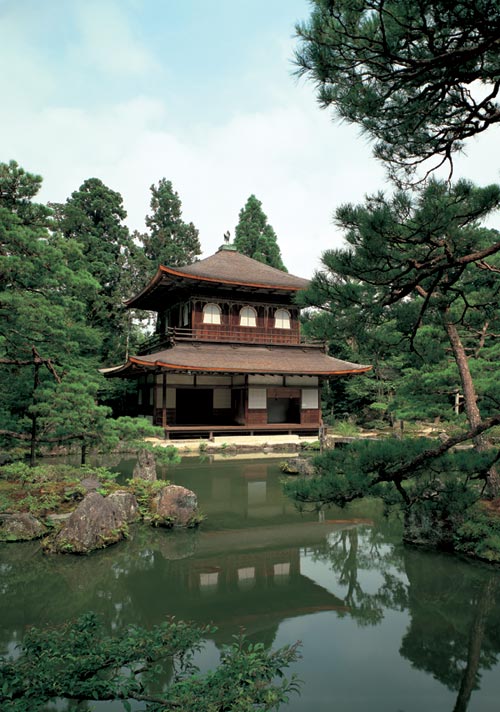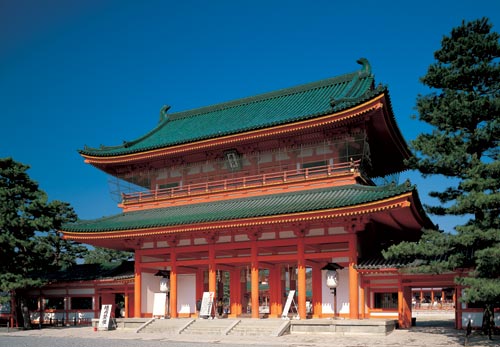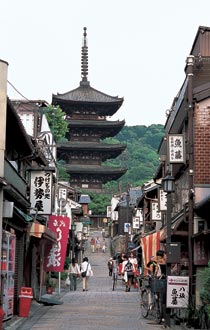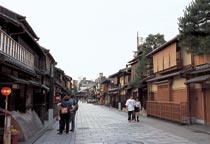| Web Japan > NIPPONIA No.30 > Special Feature* |
|
|
|
NIPPONIA No.30 September 15, 2004
|
Ginkaku-ji (Temple of the Silver Pavilion)
Formal name, Jisho-ji. Founded in 1482 by the Muromachi Shogun, Ashikaga Yoshimasa. The design shows the influence of the Temple of the Golden Pavilion, which was founded by Yoshimasa's grandfather, Ashikaga Yoshimitsu. The garden is unforgettable for its Ginshadan, a "sea" of white sand with small ridges representing waves, and Kogetsudai, a sand cone shaped to resemble Mount Fuji. The austerity of the Silver Pavilion stands in contrast to the brilliant splendor of the Golden Pavilion. A visit to this temple will help you understand the Japanese aesthetic concept of wabi/sabi (austere serenity, elegant simplicity). It should be pointed out that, while the upper stories of the Golden Pavilion are covered in gold leaf, there is no silver leaf on the Silver Pavilion.
 |
||||
Heian Shrine
Built in 1895 to commemorate the 1,100th anniversary of the establishment of the national capital in Kyoto. The shrine buildings are reconstructions of the 9th century Imperial Palace, built to a scale of 5:8. The ancient architectural style of the Great Hall of State and the Oten Gate, offset in bright red, is most impressive. The large garden (approx. 30,000 m² in area) is laid out in the modern style and is considered a masterpiece. A great place to enjoy nature, whatever the season. The shrine's main festival, Jidai Matsuri (October 22 each year), features an extraordinary costume parade depicting people from Kyoto's long history.
 |
||||
|
Yasaka Pagoda
 Originally built about 1,400 years ago. The present pagoda was reconstructed in the year 1440. At 46 meters, it is not very high, but it is still one of Kyoto's must-see tourist attractions and a landmark of the Higashiyama district. The photo shows it from the flagstone street sloping up to it. One recommended tour is to walk to the pagoda from Kiyomizu-dera Temple, via San-nei-zaka, past many old buildings and temples.
|
||||
|
Gion
 The Gion district developed along the road leading to Yasaka Shrine. Large numbers of people began coming here in the 17th century, attracted by the plays and joruri ballad puppet performances being presented in very small buildings. Gion later became one of Japan's best known entertainment districts, and still retains that distinction. Come here and stroll along the flagstone walkways of Gion, past small, old-fashioned enterprises that still remain from Kyoto's good old days. Maiko dancing girls sometimes walk by dressed in fancy kimono.
|
||
|
|
||||||||
|